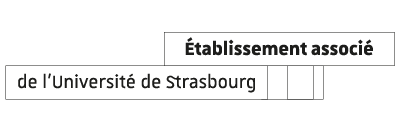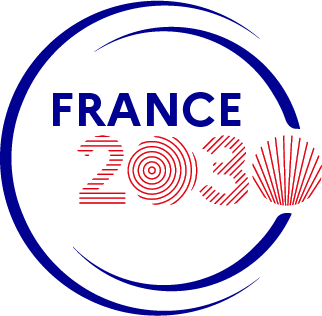Reconsider the role of artistic objects and performances in past and present societies, build ties between academic and artistic communities and disseminate result to a wider public.
Important information
Summary
Good to know
Voir la version française (FR)
Ambitions
The aim of the ‘Centre for research and experimentation on the artistic act (CREAA)' is to foster research on the artistic act through an interdisciplinary approach, using knowledge and methodologies coming from the social sciences, the humanities, and the exact sciences.
The CREAA is an extension of the LabEx GREAM, and expands its research areas. The main goal is to deepen the concrete and observable forms of the creative process, especially those involving the synergy or the convergence of different artistic practices. Various approaches are involved: from semiotics to mathematical and cognitive modelling, from audio-visual recording technologies to cultural history, from musical analysis to aesthetics, from the archaeology of sound to cultural anthropology.
Thematics and research challenges
The CREAA intends to become an international research centre for the interdisciplinary study of the artistic act, also supporting collaborations with artists and creative institutions involved in the art world.
The artistic act is studied through four main axes of research. Each of them explores a wide time span, from the ancient past to the contemporary world:
- Creation and production: this axis stresses the importance of people and actors involved in the artistic production (e.g. artists and performers) in order to explore the functioning of collaborative frameworks. A key example is the orchestra, which is studied not only from the viewpoint of the interaction between the musicians and the conductor, but also in its gestural and stage components. The ambition is to show that the genesis of a work is often linked to its conditions of production and its effective implementation. This axis also examines the notions that make it possible to describe, in a complex system, the relations of the elements of creation. Another example is the study of the processes of creation and representation related to traditional practices, such as improvised music from the Mediterranean basin.
- Spaces and places: two different spaces of the artistic act are considered here, namely the physical space and the cyberspace. The first perspective examines the way in which the artistic act is carried out in the public space, especially within the urban context and in relation to performances, rituals and even architecture (this latter is often informed by musical principles of construction). The second perspective studies the changes that virtual spaces provokes on the artistic act, from recording technologies to computer-based creation. In particular, this involves the study of the status of digital works, questions of intermediality, as well as new artistic genres emerged in the cyberspace.
- Memory and temporality: the focus is placed on the modalities of transmission of artistic and cultural heritage both for individuals and communities. This phenomenon is explored via two main approaches. The historical and archaeological approach studies the evolution of instruments (organology) and that of artistic ideas, as well as the way in which the artistic act is expressed in contexts of political, ideological or social conflict. The anthropological and neuroscientific perspective focuses on how the artistic act becomes an object of collective memory rather than history, reconsidering the notion of musical invariants and trying to understand how sensory memory can be altered by new technologies.
- Theories and models: This axis comprises two main directions:
- the analysis of the way in which the artistic act can be modelled according to different approaches, in particular by showing the relations between musical acts and mathematics, through the application of multifarious analytical practices (Schenkerian, generative, set and transformational theories). This perspective encompasses both ‘art’ and ‘popular’ music, as well as other repertoires coming from non-European oral traditions. This study also surveys different models characterised by a philosophical-poetic nature and with a strong historical value (organicism, Goethean metamorphosis of plants), which are also likely to clarify and contextualise the previous approaches.
- The second direction focuses on critical editions and critical commentaries of noteworthy theoretical texts on music, especially those related to philosophy, mathematics and the physical sciences, as well as on their interconnections. The texts concerned range from the antiquity to modern times.
Graduate program
The study of the artistic act is a new and ground-breaking field of research that will be certainly enhanced by the arrival of young scholars, especially those trained in interdisciplinary methodologies. The CREAA offers two specific training courses, run in conjunction with the Faculté des Arts and the Doctoral School of Humanities (ED520). These two training courses are:
- An one-year interdisciplinary university diploma (DUAA, Master's degree, M2) offering an interdisciplinary course based on the seminar series offered by the Faculté des Arts. This course can be attended by students holding a master's degree in an artistic discipline, or in addition to a master's degree already started (the DUAA will constitute in this case a valuable interdisciplinary supplement):
- A PhD in musical performance and creation (DICM, PhD) based on the ten-year expertise acquired by the LabEx GREAM on the musical act. This doctorate is Franco-German and is hosted in a bi-national doctoral school at the Université Franco-Allemande. It focuses on musical performance and composition and is run in partnership with the HEAR (Haute Ecole des Arts du Rhin) and the Hochschule für Musik in Freiburg. The doctoral programme will include musicians and researchers of the highest international standing. It comprises international research seminars and masterclasses. It leads to the awarding of the degree of Doctor of Philosophy (Dr. Phil. in Germany), supervised by two academics: one for the theoretical dimension and one for the performative dimension.
musicology - theatre studies - visual arts - design - performance studies - mathematics - acoustics - cognitive psychology - cultural history - theology - anthropology - neurosciences - archaeology - computer science
- The DUAA (Master) can be attended during the second year of a Master en Arts (architecture, plastic arts, cinema, dance, design, multimedia, music, theatre, etc.) or it can be taken as a continuation of a Master en Arts. This diploma has an international scope, both for students and teachers, and requires skills in foreign languages: French, English, and, if possible, German.
- The DICM (PhD) is aimed at high-level performers, composers and improvisers who already hold a university-level master's degree (or equivalent). These students must have both practical and scientific skills of a high level. The thesis can be written in French, German or English. A good knowledge of German and French is highly recommended in order to follow the seminars.
Admission criteria
- Master (DUAA): The student holds at least a first-year Master's degree (première année de master, M1), The student has attended a course of study in an artistic discipline for at least three years (confirmed by a diploma), The student is fluent in French and English, and, if possible, in German.
- PhD: The admission criteria for the DICM (PhD) are available at the following link: https://accra-recherche.unistra.fr/laccra/doctorats/doctorat-interpretation-et-creation-musicale-icm/
Application process
- Master: The admission to the DUAA (Master) is decided on the basis of an application form and a set of documents (dossier) after the examination of a pedagogical commission.
- PhD: The admission procedures for the DICM are available at the following link: https://accra-recherches.unistra.fr/laccra/doctorats/doctorats-interpretation-et-creation-musicales-icm/















